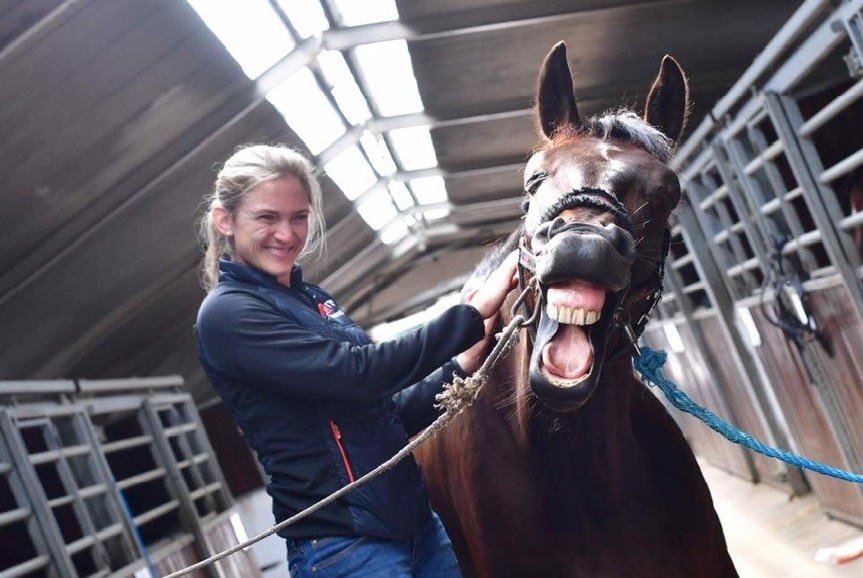Equine Therapy for Trauma Healing: How Steeds Assist Heal Emotional Wounds
Equine Therapy for Trauma Healing: How Steeds Assist Heal Emotional Wounds
Blog Article
Laser Therapy in Equine Therapy: A Modern Approach to Improving Horse Health And Wellness
Laser treatment has arised as an essential technique in equine therapy, utilizing focused light energy to foster cellular repair work and accelerate recovery from a selection of conditions. This non-invasive technique is particularly efficient in handling musculoskeletal injuries, injuries, and inflammatory problems, considerably boosting general steed health and wellness. By stimulating mitochondrial activity and boosting ATP production, laser therapy not only boosts blood circulation yet also offers significant pain relief. As this innovative treatment remains to gain grip, it opens up intriguing opportunities for addressing chronic problems like arthritis and unguis problems, indicating a transformative shift in veterinary treatment. What makes this technique especially compelling?
Comprehending Laser Treatment
Laser therapy, a non-invasive therapy technique, has gained substantial traction in equine medication because of its effectiveness in advertising healing and pain alleviation. This advanced healing technique uses concentrated light energy to permeate cells, promoting mobile repair work and regrowth. The underlying system entails the excitement of cellular mitochondria, causing boosted manufacturing of adenosine triphosphate (ATP), the energy currency of cells. Improved ATP degrees accelerate cells repair procedures and minimize inflammation, making laser treatment particularly efficient for treating bone and joint injuries, injuries, and various other inflammatory conditions in equines.
There are a number of sorts of lasers made use of in equine therapy, each with details wavelengths and power outcomes customized to various restorative needs. Low-level laser therapy (LLLT), likewise referred to as chilly laser therapy, utilizes reduced power degrees to boost cell function without creating thermal damage. High-intensity laser treatment (HANDLE), in contrast, makes use of higher power degrees to accomplish deeper tissue penetration and even more substantial restorative results.
Veterinarians utilize different laser devices and strategies depending on the problem being treated and the wanted depth of cells penetration. Appropriate training and knowledge are essential for making certain the safe and reliable application of laser treatment, thereby optimizing its therapeutic capacity while lessening threats.
Advantages for Horse Wellness
With a solid understanding of just how laser therapy functions, it is essential to explore its various benefits for equine health and wellness. Among the main advantages is its capability to speed up cells fixing and cell development. By promoting cellular function, laser therapy advertises faster wound healing and help in the regrowth of broken tissues. This can be particularly useful in reducing healing times for steeds experiencing injuries.
Additionally, laser therapy has been shown to boost circulation, consequently enhancing blood circulation to impacted areas. Enhanced blood circulation guarantees that vital nutrients and oxygen are supplied more efficiently, helping with the recovery process. In addition, laser treatment's anti-inflammatory effects aid in lowering swelling and pain, which is vital for the overall health of the equine.
Pain monitoring is one more substantial benefit. By launching endorphins and obstructing discomfort signals, laser therapy supplies reliable, non-invasive relief from both acute and read this chronic pain. This can add to boosted movement and quality of life for the pet.
Finally, laser therapy is a non-invasive treatment choice, decreasing the danger of difficulties related to even more invasive procedures. Its convenience and efficiency make it a vital device in contemporary horse vet medication.
Common Conditions Dealt With

One more widespread condition treated with laser therapy is arthritis. Steeds dealing with both severe and persistent joint inflammation gain from the anti-inflammatory effects of laser therapy, which helps to alleviate pain and enhance joint function. Furthermore, laser therapy is utilized in the administration of injuries. Whether managing medical incisions or traumatic injuries, the modality advertises much faster cells repair work and reduces the danger of infection.
Horse respiratory system problems, such as frequent air passage blockage (RAO), likewise respond favorably to laser therapy. Laser treatment is helpful in treating unguis troubles, including laminitis and abscesses.
Procedure and Safety And Security
Implementing laser treatment in equine treatment involves a careful treatment to make sure both efficacy and safety. Equine Therapy. The process starts with a complete veterinary assessment to figure out the viability of laser treatment for the horse's details condition. As soon as deemed appropriate, the treatment area is prepared by cleansing and, if needed, clipping the hair to enhance laser infiltration
The practitioner needs to select the right kind of laser, typically a low-level laser (LLLT) or a high-power laser (HPL), check over here depending upon the condition being treated. The laser gadget is then calibrated to the proper wavelength, power, and period setups. During the application, the expert moves the laser over the targeted location in a systematic way, making sure constant and also exposure.
Safety protocols are strictly followed, including using protective glasses for both the professional and the steed. Furthermore, it is critical to keep an eye on the equine for any type of signs of pain or adverse responses throughout the procedure. Post-treatment, the horse is commonly provided a duration of remainder to enable the healing impacts to manifest.

Future of Horse Laser Therapy
As developments in veterinary medicine continue to unravel, the future of equine laser therapy holds substantial guarantee. Arising technologies and much deeper clinical insights are set to improve and expand the applications of laser treatment for horses.
Furthermore, continuous research into the molecular and mobile devices of laser therapy will likely generate optimized procedures customized to certain conditions, enhancing effectiveness and lowering treatment times. Individualized treatment strategies based on genetic and biochemical markers might come true, making site link certain that each steed receives the most ideal and effective treatment.
Furthermore, regulative advancements and standardization of protocols will boost the integrity and dependability of laser therapy in equine practice. Equine Therapy. As these technologies remain to emerge, equine laser therapy is positioned to end up being a crucial element of vet care, offering boosted healing and enhanced lifestyle for steeds globally
Final Thought

Report this page